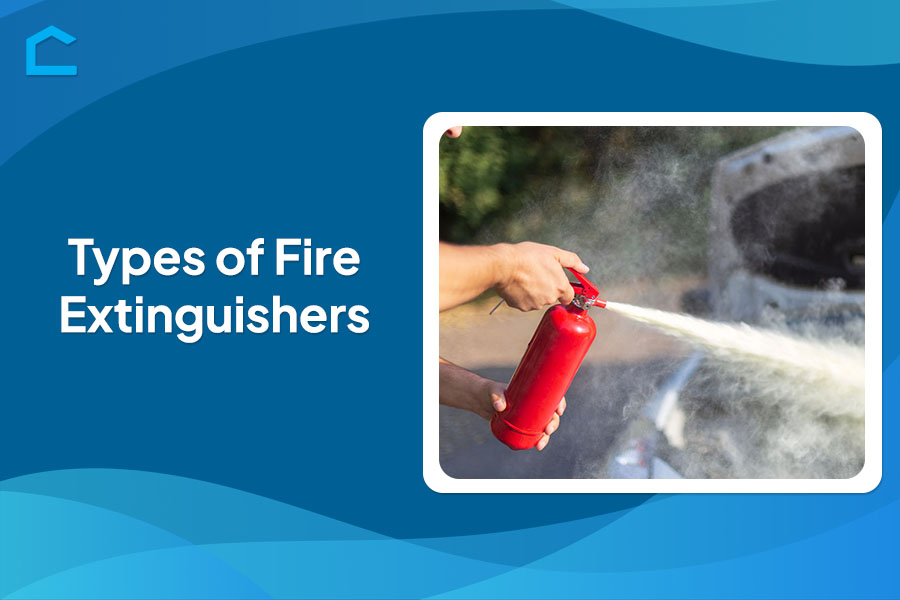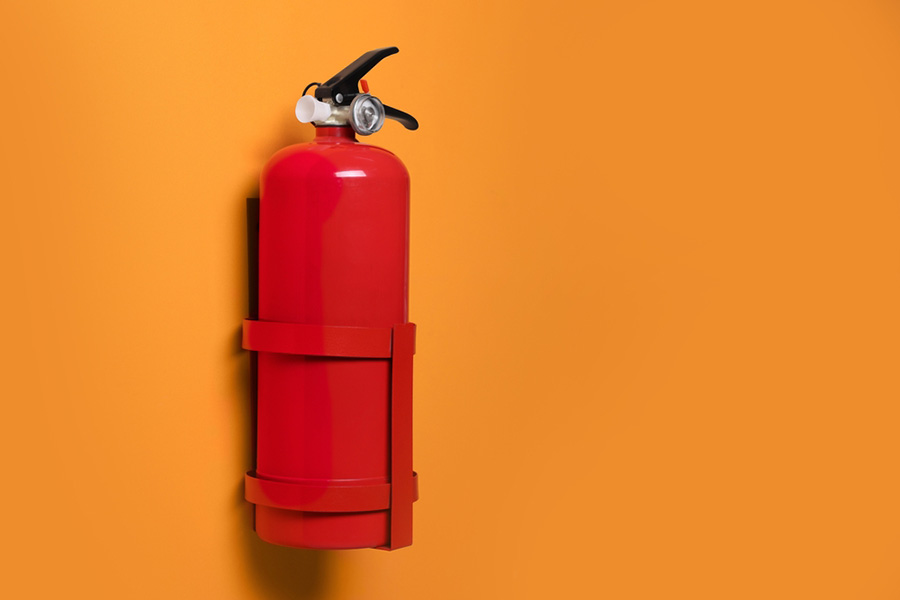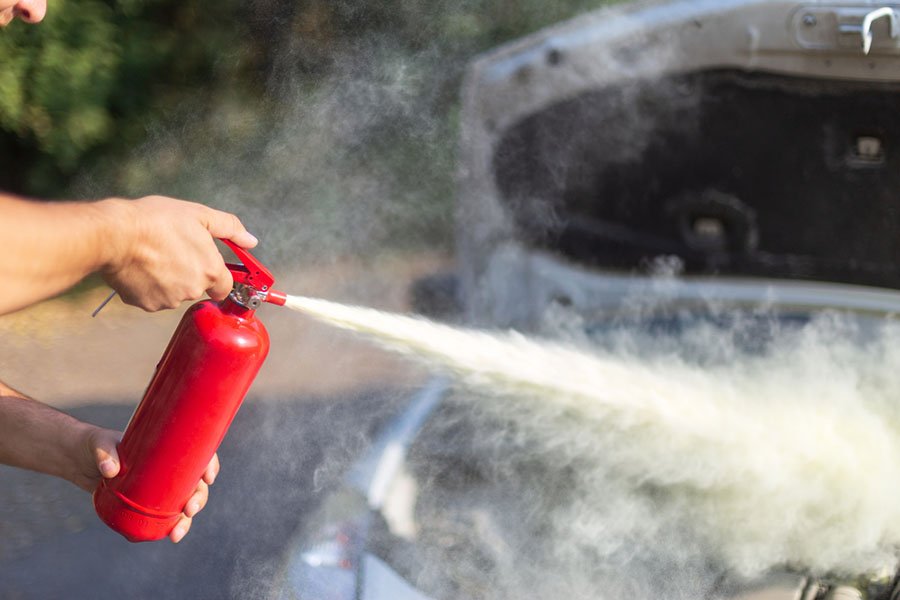Types of Fire Extinguishers

Fire extinguishers are vital tools in fire safety, designed to swiftly and effectively suppress various types of fires before they escalate. Different types of fires require different extinguishing agents, and knowing the types of fire extinguishers is crucial for selecting the right tool to combat specific fire hazards.
In this article, we will take a closer look at the different types of fire extinguishers available, their specific uses, and how to choose the right one for your needs. Let’s start now and be prepared for any fire-related situation that may arise!

Types of Fire Extinguishers
Class A fire extinguishers
Class A fire extinguishers combat fires involving combustible materials like wood, paper, and cloth. They typically use water or foam as the extinguishing agent. But what type of fire extinguisher for home use is the best choice?
Well, class A could be a suitable option. They are suitable for small fires in the home or office, easy to use, and readily available. However, they should not be used on electrical or flammable liquid fires.
Class B fire extinguishers
Class B fire extinguishers are designed for fires involving flammable liquids such as gasoline, oil, and grease. They use carbon dioxide (CO2), foam, or dry chemicals. CO2 extinguishers work by displacing oxygen and cooling the fire.
Foam extinguishers create a blanket to smother flames, while dry chemical ones interrupt the chemical reaction, fueling the fire. These extinguishers are often found in garages, workshops, and industrial settings. Using the right type is crucial for effectively combating the specific flammable liquid involved.
Class C fire extinguishers
You should opt for Class C fire extinguishers when dealing with electrical fires linked to appliances, wiring, or circuit breakers. These extinguishers are specifically designed to tackle electrical fires safely.
They utilize non-conductive agents like CO2 or dry chemicals. This ensures that the fire can be put out without risking electrical shock. CO2 works by displacing oxygen and cooling the fire rapidly.
On the other hand, dry chemical agents interrupt the chemical reaction fueling the fire. These extinguishers are crucial for various settings, including homes, offices, and places with electrical equipment.
Class D fire extinguishers
Class D fire extinguishers are used for fires with metals like magnesium, titanium, and sodium. They contain dry powder agents that form a crust over the fire, cutting off oxygen and putting out the flames.
You’ll often find these extinguishers in industrial settings where combustible metals are present. We must mention that proper use and handling may require specialized training.
Class K fire extinguishers
Class K fire extinguishers are essential for combating fires involving cooking oils and fats in commercial kitchens and restaurants. They use wet chemical agents that cool and saponify (turn into soap) the hot oil, creating a soapy solution that smothers and extinguishes the fire.
Regular maintenance and inspections are vital to ensure Class K extinguishers remain effective. They are mandatory in commercial cooking spaces due to the high risk of grease fires. The wet chemical agents are highly effective at cooling and suppressing the intense heat of these fires.
Multi-purpose fire extinguishers
Multi-purpose fire extinguishers, often labeled as ABC extinguishers, handle multiple types of fires for versatility and convenience. They use dry chemical agents effective on Class A (ordinary combustibles), Class B (flammable liquids), and Class C (electrical) fires.
These extinguishers offer versatility in handling various types of fires, and they are suitable for homes, offices, and small businesses. However, they may not be the ideal choice for specialized fire hazards due to their general-purpose nature.
It’s crucial to use the appropriate fire extinguisher for the specific type of fire to ensure effective fire suppression and personal safety. We advise you to read the instructions and follow proper fire safety protocols during fire emergencies.

How to Choose Fire Extinguisher
Choosing the right fire extinguisher for different areas of your home is critical for safety. For general use, multi-purpose (ABC) extinguishers can handle most types of household fires.
However, specialized extinguishers are recommended for specific hazards. Class K extinguishers are for kitchen fires involving cooking oils and grease, while Class C extinguishers are for electrical equipment fires.
We must emphasize that proper placement near potential hazards and exit routes, regular maintenance, and familiarity with usage are also important. This way, you can be better prepared to respond effectively in case of a fire emergency at home.
Conclusion
Fire extinguishers are essential tools for fire safety, designed to suppress various types of fires before they escalate. As said, different types of fires require different extinguishing agents, making it crucial to know which extinguisher to use.
Among the many, multi-purpose (ABC) extinguishers are versatile and can handle most household fires. However, for specific hazards, you should opt for specialized extinguishers. Class K extinguishers are ideal for kitchen fires involving cooking oils and grease, while Class C extinguishers are designed for electrical fires.
We must also note that proper placement, regular maintenance, and familiarity with their use are key to effectively managing fire emergencies. So, choose and maintain the right extinguishers to stay prepared and safe!
